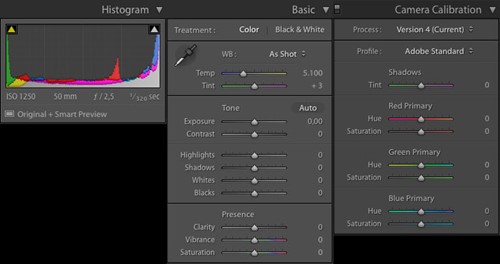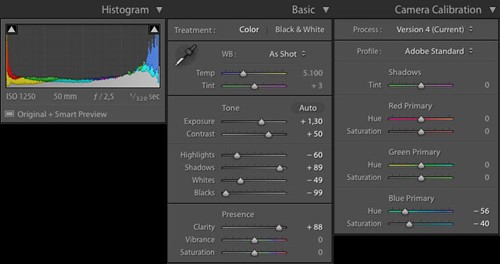Can we get enough light ?
Heads Up!
This article is several years old now, and much has happened since then, so please keep that in mind while reading it.
The spectre of the LED lights are quite narrow compared to the old light bulbs. The sensor on our cameras is created by pixels which are covered by filters. These filters are either red, blue or green and there are actually 2 greens, but that’s another story.
So if you’re shooting in a venue using LEDs, and they only use blue lights, your old 12mp are reduced to a 3mp camera since it’s only the blue pixel that’s getting lit due to the filters. This is not only a problem with old cameras.
A problem with the old cameras is the lack of dynamic range.
If you shoot and get any light within your framing, you will see that the core of the light can be totally white and then it suddenly gets coloured. If it’s a newer camera like a Nikon D750 the core will be white, but you won't get the sudden change in color. It will be a more smooth transition from core into the color.
My old Nikon D3s is a wonderful camera and a true beast when it comes to ISO. As a photographer we hate noise, but on the old beast, the noise it creates is actually beautiful.
But due to the lack of dynamic range, the photos tend to blow out when used with LED lights.

So how do I handle these blow outs ?
First of all, what is a blow out? A blow out is when one of the main colours, or all of them together, is at 100%. There is nothing in the real world that’s 100% red, green or blue.
That’s a blow out.

Lightroom is the software I use to develop my RAW files.
When you’re in Develop mode there is a section called Camera Calibration. This is where I control most regarding the light.
In this section you can control the hue and saturation of the 3 colours. Saturation changes the amount of color in the selected color, where as hue kinda controls the colorfullnes.

This can usually cure most of the blown out areas, but it can make the photo a little dull. A fix to this is to use contrast and clarity. At times lowering the black can also help.
This is the final shot

See more of Sebastians amazing concert shots at his website